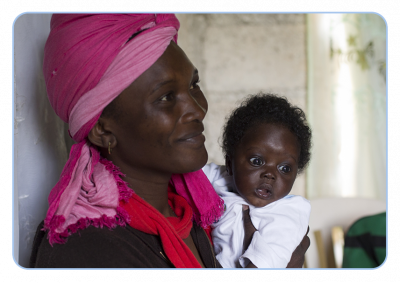What is behaviors first?
Putting behaviors first means putting behaviors at the heart of everything you do. Whether you think of it as behavior-centered, behavior-led, or behavior-oriented, it means:
- your starting point is identifying and understanding present behaviors,
- next you select priority behaviorsA priority behavior is a behavior that will impact directly on the causes inhibiting achievement of your goal. It answers the question "who (primary actor) needs to do what (behavior)?" and based on those initial possible behaviors, "what will happen as a result of this behavior?" If the behavior will impact directly on your goal, it is a priority behavior. For example, if the goal is reduce infant mortality, the result of achieveing that goal is "the baby survives"; then pregnant women sleep under an insecticide-treated net every night will DIRECTLY impact on the baby's survival and is a priority behavior. While service providers treat pregnant women with respect is a good action to take, it does not directly impact on the baby's survival and, therefore, is not a priority behavior, but a supporting actor action. based on this understanding, and
- then you move on to the changes in behavior you hope to see.
Even your primary actors often don’t take their own behavior into account. For example: They will buy something to help in their household. But they don’t really understand that the product corresponds to a behavior. So, the product gets left to the side, thrown out, or even given to someone else. You’ve been there yourself, right? Your primary actors are no different. You have to help everyone see the behaviors first!
Why is putting behaviors first so important?
There are many reasons why putting behaviors first is so important. First, let’s highlight two important positive reasons:
- Behaviors lay the foundation for the sustainability of any development initiative, regardless of the thematic area. If behaviors can change, then systems can function. When systems function, they stay in place working for the people.
- Sometimes we think we know what is best for people. So, we start by suggesting an activity or intervention, without thinking about the behaviors and what it means. Putting behaviors first makes sure you understand your primary actor inside and out. Then you use that knowledge to suggest local solutions to local problems. That encourages your primary actor to take their own initiative in solving problems.
And now, let’s look at the flip side, when you don’t put behaviors first:
- Not putting behaviors first can lead to a breakdown of infrastructure and the loss of huge resources (including financing). When people don’t see the need for certain infrastructure, because it’s not linked to their behaviors, they won’t use it. Unused stuff is wasted. Neither you nor your communities want that.
- Not putting behaviors first tells primary actors that you don’t care about them: You are not listening to them. You are not involving them. Maybe you are even forcing your own preconceived ideas or solutions on them. When people feel that your program does not reflect their needs, wants, and identities then they won’t respond in the ways you want, and they won’t change their behaviors.
How does putting behaviors first make BIG different?
While some social and behavior change (SBC) and social and behavior change communication (SBCC) programs “talk” behaviors, they usually put them later in the design and development of the program process. BIG puts them front and center and keeps them there. You can’t even move forward on thinking about interventions without clearly describing and analyzing your priority behaviors first.
Behavior integration guidance provides you with the tools needed to put behaviors first. It gives you the behavioral language to help you express the “behaviors first” outlook. And BIG has checklists for maintaining behavioral consistency throughout your program, from the first step to the last step.
 BIG CONCEPT:
BIG CONCEPT: 

 The Manoff Group was acquired by JSI in 2022.
The Manoff Group was acquired by JSI in 2022.